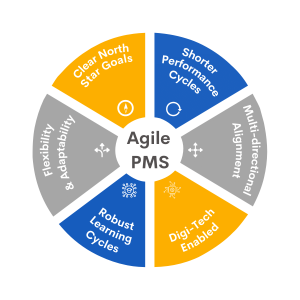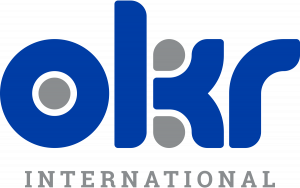
Nikhil Maini – MD & Co-Founder, OKR International

Features of an Agile Performance Management System

OKR International
Say Goodbye to Traditional Performance Reviews and bell curves – Say hello to Agile Performance Management.
— Nikhil Maini
INDIA, February 20, 2023 /EINPresswire.com/ — Traditional performance management systems have long been a staple of many organizations, but their effectiveness has come under increasing scrutiny in recent years. With low levels of employee engagement, dissatisfaction among managers, and a lack of alignment with business goals, it’s clear that traditional performance management is no longer sufficient for meeting the needs of today’s rapidly changing workplace. As a result, many organizations are shifting towards more agile and flexible approaches to performance management, in order to better engage and motivate employees, align performance with business objectives, and drive better outcomes for the organization as a whole.
In an article by Washington Post, Gartner (Erstwhile CEB) was reported saying 95% of their managers are dissatisfied with their traditional performance management processes. Numerous studies and reports suggest that traditional performance management systems are failing to meet the needs and expectations of both employees and managers, leading to low levels of satisfaction and effectiveness. As a result, many organizations are looking to adopt more agile and flexible approaches to performance management.
So, What exactly is Agile Performance Management?
Agile Performance Management is an approach to managing employee performance that is aligned with the principles of agile methodology. It focuses on continuous feedback and improvement, rather than the traditional annual performance review process.
In traditional performance management systems, performance is evaluated once a year through a formal process that includes setting goals, assessing performance, and providing feedback. Agile performance management, on the other hand, is designed to be an ongoing process that involves continuous feedback and adjustment.
Features of Agile Performance Management
Agile Performance Management is an approach to performance management that is characterized by its focus on frequent feedback, collaboration, and adaptability. It involves setting goals, measuring progress, and providing feedback on an ongoing basis, rather than just once or twice a year. Agile Performance Management recognizes that traditional performance management systems often create more problems than they solve. Annual performance reviews can be stressful for both employees and managers, and they may not provide enough information for employees to improve their performance. Here are the key features of an Agile Performance System:
– Clear Alignment with Organisational Northstar: Goal setting using OKRs with common goals aligned to company purpose & strategy.
– Shorter Performance Cycles: Supported by regular check-ins, coaching & feedforward conversations, and celebrations.
– Multi-Directional Alignment: Departure from cascading goals towards top-down, bottom-up and cross alignment.
– Digi-Tech Enabled: Digitisation of PMS with real-time analytics on performance metrics & outcomes.
– Robust Learning Cycles: Continuous & contextual people development that is contextual to business needs.
– Departure from Bell Curves: Better alternatives to forced ranking and differentiation in performance.
Principles of Agile Performance Management Systems
Agile performance management systems are designed to be flexible, iterative, and responsive to change, and they are built on a set of principles that guide their implementation. Some of the key principles of agile performance management systems include:
1. Transparency: Clear, measurable goals that are aligned with the organization’s strategy and mission.
2. Flexibility & Adaptability: Evaluating performance at regular intervals rather than once or twice in a year.
3. Collaborative Goal-Setting: Pivot goals and priorities using OKRs using a social process of collaboration.
4. Feedforward Mindset: Regular proactive conversations that enable success for teams and employees.
5. Psychological Safety: Culture of inclusion encouraging experimentation & fail-fast mindsets.
6. Differential Rewards: Based on their individual performance, skills, experience, and contribution to the organization.
Benefits of Agile Performance Management
Agile performance management is not a one-size-fits-all solution. Every organization is unique, and what works for one company may not work for another. Similarly, no two organisations may derive the same benefits from implementing an agile performance management system.
Benefits for CEOs
1. Bridge the strategy to execution gap.
2. Quicker, more effective alignment between teams and goals.
3. High performance culture & outcome-driven organisation.
4. View of the entire organisation’s performance in real time.
5. Flexible & adaptive system that suits changing business needs.
6. Increase discretionary effort from employees.
Benefits for CHROs
1. Making PMS a more pro-active exercise.
2. Improved people attrition, absenteeism & engagement.
3. Identify, develop, retain, and promote high-potential employees.
4. Differential and dynamic reward systems.
5. Empower line-managers as custodians of performance.
6. People analytics on Digi-tech platform.
Benefits for Line Managers
1. Real-time view of team performance.
2. Better productivity from teams.
3. Reduction in annual review burden.
4. Better alignment & ownership from team members.
5. Clear expectations from team members using OKRs.
6. Become an enabler, not evaluator, of performance.
7. Decrease in escalations to higher management.
Benefits for Employees
1. Real-time inputs to improve performance.
2. Clarity of goals & job significance.
3. High levels of transparency & reduced bias.
4. Frequent reviews & coaching conversations.
5 Reduced angst & time in completing performance reviews.
6. Be set up for success vs. be evaluated against a standard.
7. More collaboration with teammates vs. unnecessary competition.
Challenges in Implementing an Agile Performance Management System
Implementing an Agile Performance Management System can be a challenging task. Some of the key challenges that organizations may face include resistance to change, lack of clarity and communication, buy-in from leaders and employees, managerial capability and usage of the right technology to monitor performance.
Need help with Agile PMS for your organization?
OKR International is a global pioneer in implementing OKRs and Agile Performance Management Systems. Over the last 15 years, they have partnered with dozens of organisations to support them in training, implementing and advisory services related to OKRs & Agile Performance Management. With more than 500 clients across 23+ industry sectors, OKR International is your automatic first choice for Agile Performance Management.
Nikhil Maini
OKR International
[email protected]
Visit us on social media:
Twitter
LinkedIn
YouTube
![]()









































